 Blood pressure (BP) is the pressure exerted by circulating blood upon the walls of blood vessels. Blood pressure is usually expressed in terms of the systolic (maximum) pressure over diastolic (minimum) pressure and is measured in millimeters of mercury (mm Hg). Normal blood pressure is 120/80 mm Hg. It will be relieving to hear that we have normal level but Read More …
Blood pressure (BP) is the pressure exerted by circulating blood upon the walls of blood vessels. Blood pressure is usually expressed in terms of the systolic (maximum) pressure over diastolic (minimum) pressure and is measured in millimeters of mercury (mm Hg). Normal blood pressure is 120/80 mm Hg. It will be relieving to hear that we have normal level but Read More …
Systolic and Diastolic Blood Pressure
 Blood pressure (BP) is the pressure exerted by circulating blood upon the walls of blood vessels. Blood pressure is usually expressed in terms of the systolic (maximum) pressure over diastolic (minimum) pressure and is measured in millimeters of mercury (mm Hg). Normal blood pressure is 120/80 mm Hg. It will be relieving to hear that we have normal level but Read More …
Blood pressure (BP) is the pressure exerted by circulating blood upon the walls of blood vessels. Blood pressure is usually expressed in terms of the systolic (maximum) pressure over diastolic (minimum) pressure and is measured in millimeters of mercury (mm Hg). Normal blood pressure is 120/80 mm Hg. It will be relieving to hear that we have normal level but Read More …
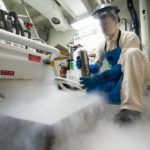 Liquid nitrogen is extremely cold. It will freeze any living tissue it comes in contact with. Applying small amounts of liquid nitrogen to treat various skin problems is now a standard treatment. The medical term for this treatment is cryotherapy. The boiling point of liquid nitrogen is 195.8 degree Celsius and is used for instantly freezing the food and drinks.
Liquid nitrogen is extremely cold. It will freeze any living tissue it comes in contact with. Applying small amounts of liquid nitrogen to treat various skin problems is now a standard treatment. The medical term for this treatment is cryotherapy. The boiling point of liquid nitrogen is 195.8 degree Celsius and is used for instantly freezing the food and drinks.  The pain and physical discomfort resulting from carrying a heavy school bag can also result in stress and lack of attentiveness in a child, affecting their learning in the precious formative years. The health, safety, and well-being of students are a priority for the parents and the school management. Carrying heavy school bags is a concern for students and families.
The pain and physical discomfort resulting from carrying a heavy school bag can also result in stress and lack of attentiveness in a child, affecting their learning in the precious formative years. The health, safety, and well-being of students are a priority for the parents and the school management. Carrying heavy school bags is a concern for students and families.  Difference Between Tofu and Paneer No introduction needed for the food item paneer in India. Paneer and tofu are similar in appearance, but they are very different in taste, nutrition, fat content and ingredients. What is Paneer? Paneer is also known as ‘cottage cheese’ made from coagulated buffalo milk (paneer can be made from cow’s milk but commercial preparation often
Difference Between Tofu and Paneer No introduction needed for the food item paneer in India. Paneer and tofu are similar in appearance, but they are very different in taste, nutrition, fat content and ingredients. What is Paneer? Paneer is also known as ‘cottage cheese’ made from coagulated buffalo milk (paneer can be made from cow’s milk but commercial preparation often 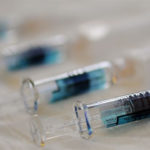 What is H1N1 Influenza Virus Vaccine? H1N1 influenza virus vaccine is used to prevent infection caused by the pandemic 2009 H1N1 influenza virus. H1N1 influenza is sometimes called “swine flu” because it originated in pigs. You cannot become infected with H1N1 influenza from eating pork products. The injectable H1N1 influenza virus vaccine is a “killed virus” vaccine. H1N1 influenza virus
What is H1N1 Influenza Virus Vaccine? H1N1 influenza virus vaccine is used to prevent infection caused by the pandemic 2009 H1N1 influenza virus. H1N1 influenza is sometimes called “swine flu” because it originated in pigs. You cannot become infected with H1N1 influenza from eating pork products. The injectable H1N1 influenza virus vaccine is a “killed virus” vaccine. H1N1 influenza virus  Pica Disorder The name “Pica” comes from the Latin word for “magpie,” which is a bird that’s known for eating anything and everything. Pica is a craving to eat substances other than normal food. Between 10% and 30% of kids ages of 1 to 6 years have this eating disorder. Subtypes are characterized by the substance eaten, for example: Coniophagia
Pica Disorder The name “Pica” comes from the Latin word for “magpie,” which is a bird that’s known for eating anything and everything. Pica is a craving to eat substances other than normal food. Between 10% and 30% of kids ages of 1 to 6 years have this eating disorder. Subtypes are characterized by the substance eaten, for example: Coniophagia 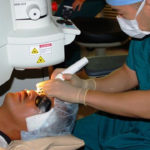 Eye Care after the Surgery Do not rub the eyes Avoid head bath for a period advised by the doctor (usually 3-4 weeks). Avoid using the handkerchief to mop the eye. Use sterile tissue only. You should use your eye drops according to the prescription. You can watch TV, read books, from the day after your treatment – but do
Eye Care after the Surgery Do not rub the eyes Avoid head bath for a period advised by the doctor (usually 3-4 weeks). Avoid using the handkerchief to mop the eye. Use sterile tissue only. You should use your eye drops according to the prescription. You can watch TV, read books, from the day after your treatment – but do 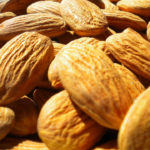 What is Cholesterol Cholesterol is a waxy, fat-like substance that’s found in all cells of the body. Your body needs cholesterol to make hormones, vitamin D, and substances that help to digest foods. Your body makes cholesterol it needs. Cholesterol doesn’t dissolve in the blood. Instead, it bonds to carriers called lipoproteins, which transport it between cells. Lipoproteins are made
What is Cholesterol Cholesterol is a waxy, fat-like substance that’s found in all cells of the body. Your body needs cholesterol to make hormones, vitamin D, and substances that help to digest foods. Your body makes cholesterol it needs. Cholesterol doesn’t dissolve in the blood. Instead, it bonds to carriers called lipoproteins, which transport it between cells. Lipoproteins are made 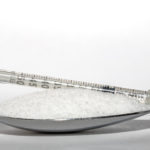 What is Insulin? Insulin is a hormone produced by the pancreas that has a number of important functions in the human body, particularly in controling of blood glucose levels and preventing hyperglycemia. The most important role of insulin in the human body is its interaction with glucose which allow the cells of the body to use glucose as energy. It
What is Insulin? Insulin is a hormone produced by the pancreas that has a number of important functions in the human body, particularly in controling of blood glucose levels and preventing hyperglycemia. The most important role of insulin in the human body is its interaction with glucose which allow the cells of the body to use glucose as energy. It 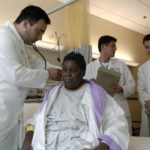 “Doctor see what your medicine has done, I read it on google, how can you advice such medication? I will never recommend anyone to get the treatment from you”. These are a very common scenario which we doctor have to face quite often. I would like to put up some facts to decrease the above conflict between the patient and
“Doctor see what your medicine has done, I read it on google, how can you advice such medication? I will never recommend anyone to get the treatment from you”. These are a very common scenario which we doctor have to face quite often. I would like to put up some facts to decrease the above conflict between the patient and